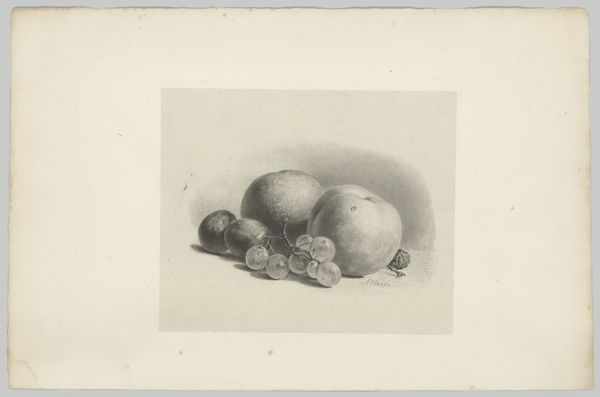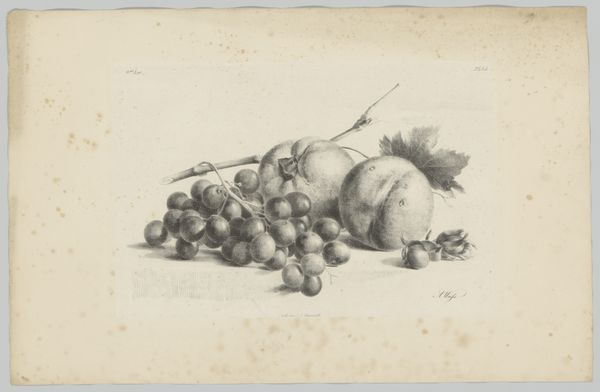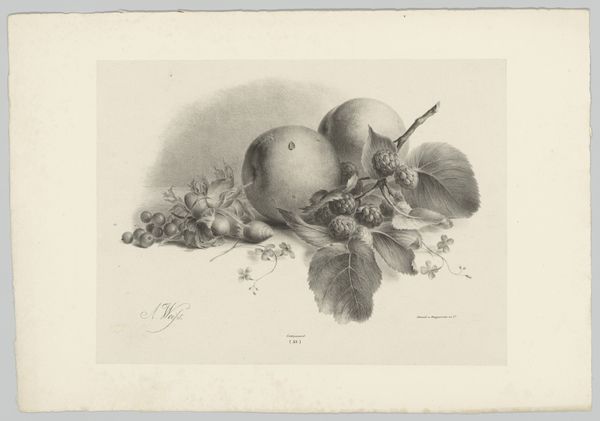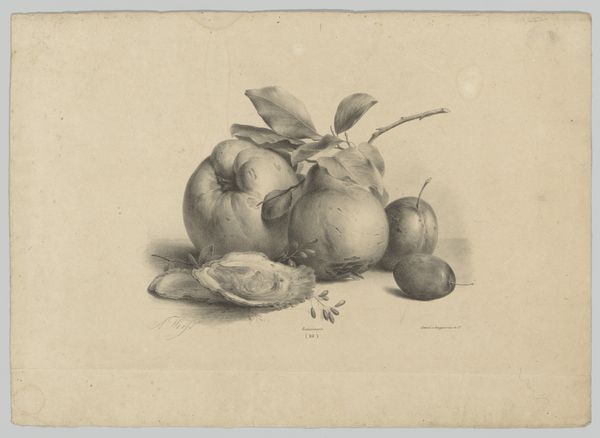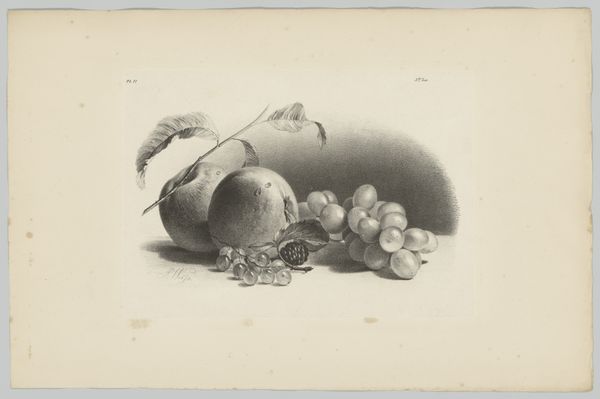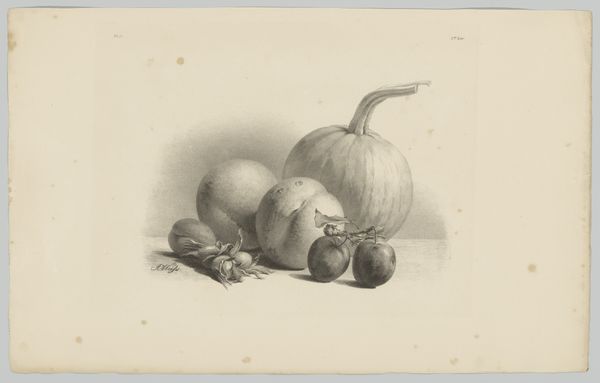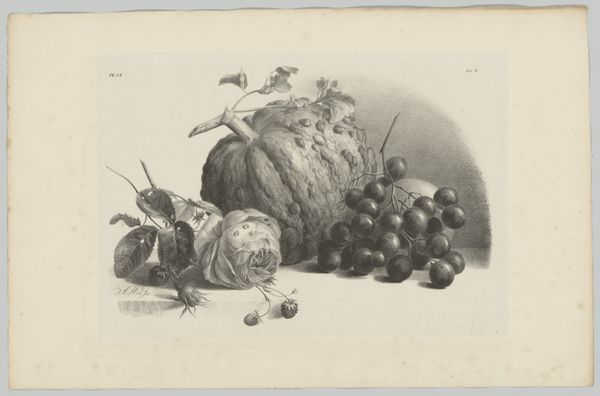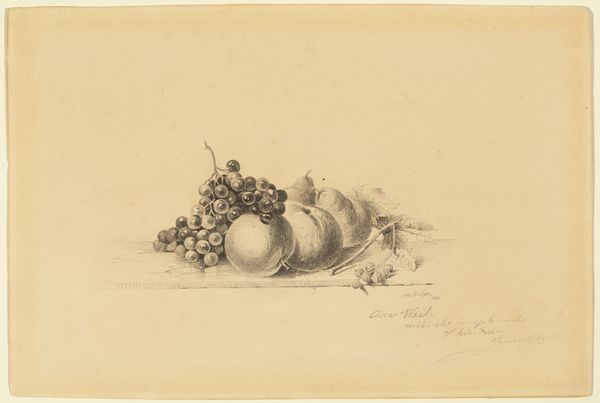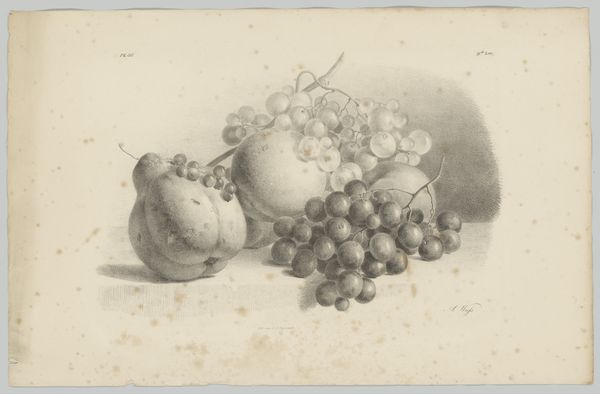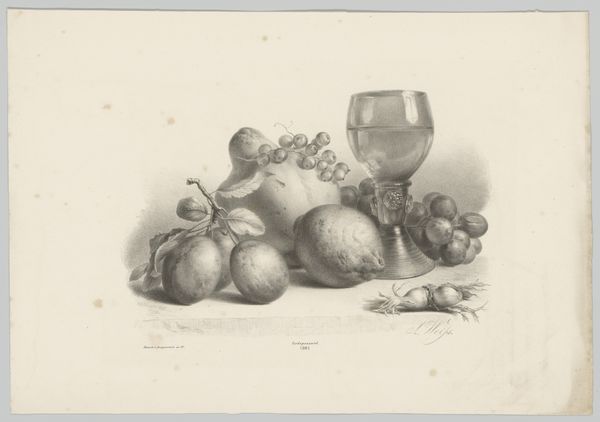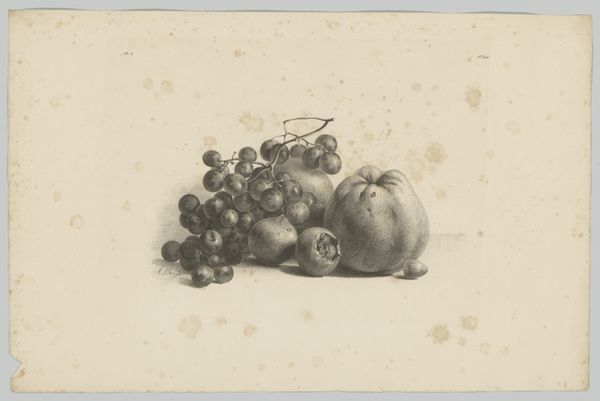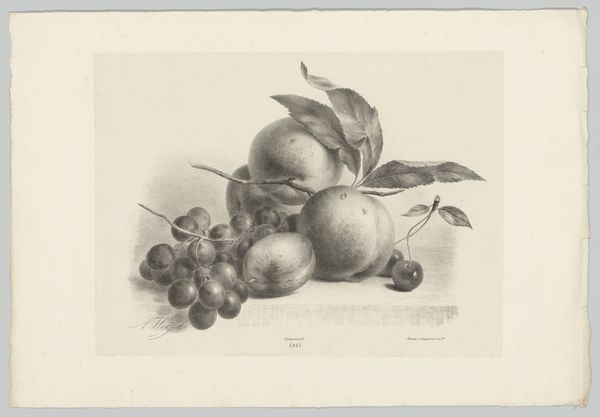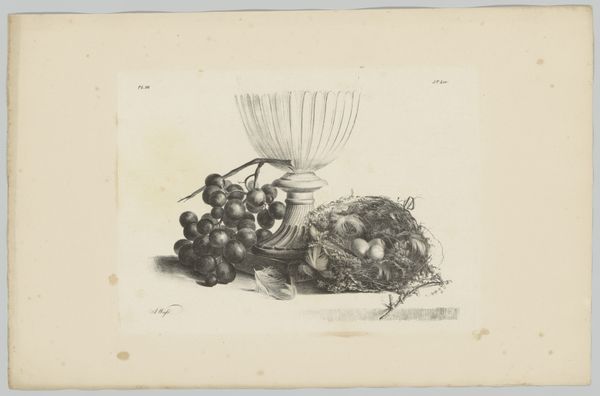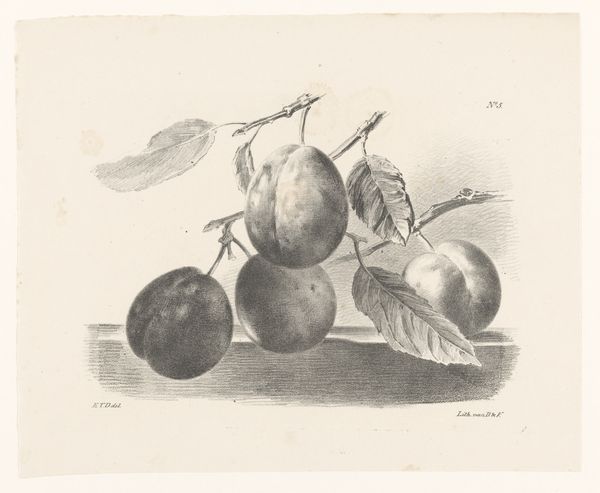
drawing, pencil, graphite
#
pencil drawn
#
drawing
#
pencil sketch
#
fruit
#
coloured pencil
#
pencil
#
graphite
Dimensions: height 313 mm, width 482 mm
Copyright: Rijks Museum: Open Domain
Curator: Looking at this arrangement of fruit, there's a quietness that settles over me. It's a rather simple setup – a pear, peach, grapes, and a peeled lemon – but captured with such stark detail in pencil and graphite, all softened by shadow. Editor: Exactly! Let's contextualize it. What you're seeing is a still life drawing, "Peer, perzik, druiven en geschilde citroen" rendered between 1820 and 1833. These objects, seemingly ordinary, offer a commentary on the times in which they were produced. Think about access to such fruit, its presentation as bourgeois decor. It hangs now in the Rijksmuseum. Curator: The interplay of light and shadow is so artfully done. It speaks of transience. Look at that lemon peel, casually spiraling; a clear demonstration of fleeting indulgence. But beyond being a beautiful depiction, there’s something deeply… symbolic. The fruit all clustered, protected. Editor: Symbolic perhaps, or rather, reflective. During that era, the rising middle class sought displays of attainable luxury in art. Still lifes offered that, echoing societal values. Each piece, arranged on the simple horizontal line, is imbued with economic and class status, revealing a moment frozen in Dutch society. These fruits speak of consumption. Curator: Agreed, I see the underlying issues with consumption too. We also need to think about how that impacts other marginalized communities at this same moment. Who has access to this sort of wealth? And whose labor is providing for this access? Editor: Absolutely! This drawing exists within a complex system of trade and colonialism. We need to consider these fruits not merely as objects of aesthetic appreciation but as signifiers of a larger power dynamic. And isn't that the function of the contemporary museum as well - to invite discussions that may spark discomfort? Curator: Precisely! It encourages us to examine not only what we see, but the broader narratives interwoven within each line of that pencil. This image is more potent as we tease apart how it is both aesthetic object, and documentation of its specific culture and history.
Comments
No comments
Be the first to comment and join the conversation on the ultimate creative platform.
